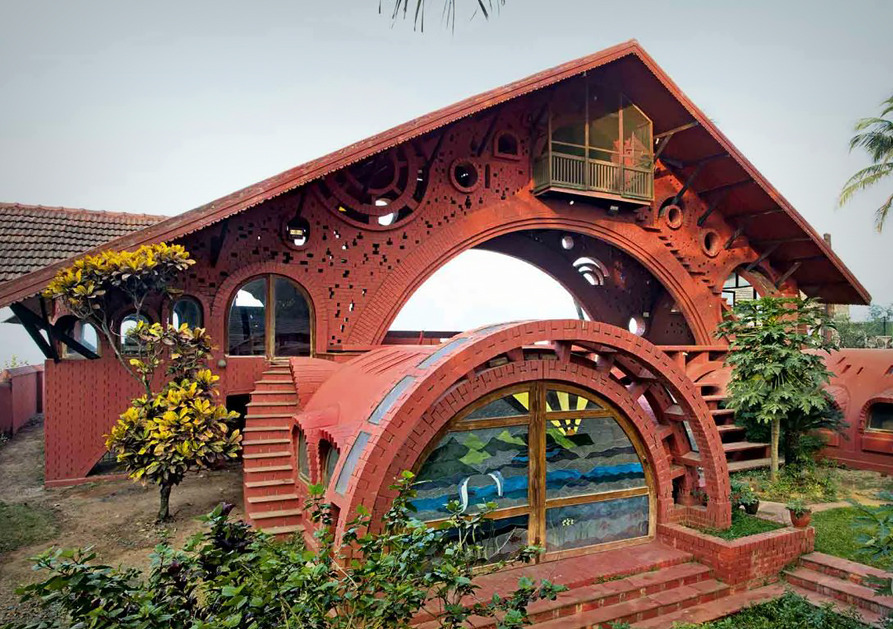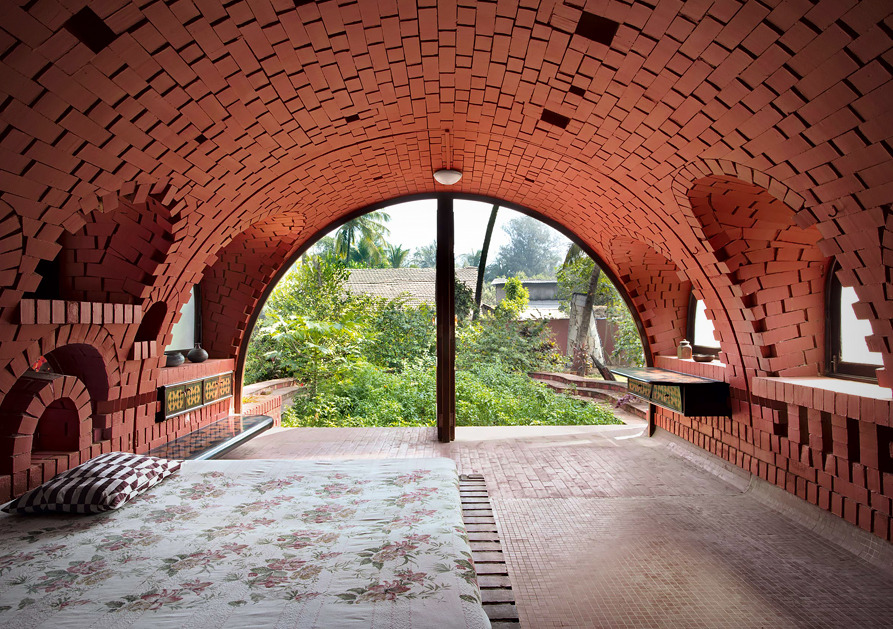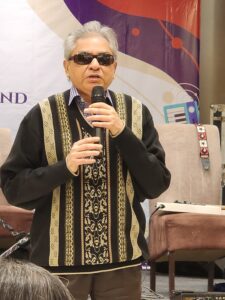“The reality of architecture is not contained in the roof and walls,
but in the space within. It is the space that is.”
-Nari Gandhi.
He was years ahead of his time. He was an architect, an artist, a sculptor; he never worked from an office, his sites were his work places. A champion of organic architecture, he was close to nature, believed in working with his own hands and was absolutely passionate about his designs, a master in his own right.
Often called the Howard Roark of India, Nari (Nariman) Dossabhai Gandhi was born in Surat on 1 January, 1934. He was always known for his highly innovative designs and his belief in an organic architectural style.

Apprentice to the great master
Having graduated from Sir J. J. College of Architecture, Mumbai in the early 1950’s Nari moved to Taliesin, USA to apprentice under the great Frank Lloyd Wright, one of the four Indians to have accomplished this feat. Wright was the inspiration behind Ayn Rand’s Howard Roark, the revolutionary architect in her book ‘The Fountainhead’. Nari remained with Wright till the master’s death in 1959, and later himself came to be known as the Howard Roark of India due to his brilliance and different working methods. He also worked for some time for the American architect Warren Weber before studying pottery at Kent State University for two years. He often showed his prowess as a sculptor during his illustrious career.
A different style
Nari was an exceptional architect, he was very passionate about his work and wanted his clients to have total faith in his designs. He followed in the footsteps of his idol Frank Lloyd Wright, continuing to work on his principles of organic architecture. He further developed his own unique style that had a subtle influence of local culture and local climate.
Nari never used the conventional methods for his architecture. Instead of working from an office and producing paper drawings and making time schedules, he liked working on his sites- explaining the design to the masons and drawing on the ground using a wooden stick as his pen. He even participated in the construction process himself at times, just like Howard Roark of The Fountainhead.
An intrinsic element of nature
Nari Gandhi was a creative genius, his work reflected the intrinsic element of nature that affected you consciously. People often failed to realize the quality of his work as his ideas were in sharp contrast to the mainstream architectural style and thinking. He did just thirty odd projects, but his buildings (mostly houses) appear to have evolved as a response to the context and remain strongly rooted to the site, a part of the surroundings. The built spaces in his buildings allow sunlight and wind to interact with the inside. There is always a continuity between the built and the un-built.
Salient features
Geometry always determined the shape of Nari’s buildings, he has produced some magnificent structures through his mastery over geometry. Some salient features of his working pattern are as follows:
- Mostly used bricks, stone, steel and timber as structural elements in his buildings
- Grey Kota stone flooring and polished teak wood ceilings
- Used slanting windows and elite-looking leather furniture
- Walls are often decorated using Jaipuri chunni
- Extensive use of paintings, sculptures and pottery- mark of a true artist
- His sites usually covered with coconut and almond trees
- Low height furniture and dim lighting for his interiors
- Terracotta murals extensively used


Nari Gandhi was a master architect, though he is often projected as an adamant, cynical designer. He was far ahead of his times, redefining concepts and forsaking traditional methods and practices. He passed away in a tragic car accident on 18August, 1993, and a master’s career was cut short abruptly.
Sources
https://en.wikipedia.org/wiki/Nari_Gandhi
https://fsdesignstudio.files.wordpress.com/2015/03/unit-3.pdf
urbanarchitecture.in/?p=140
www.scribd.com/doc/119422460/Nari-Gandhi
https://architecture.live/echoes-of-genius-a-tribute-to-nari-gandhis-architectural-legacy/
ABOUT THE AUTHOR

Sandeep Singh is an architect from IIT Roorkee.
Ten years after graduating, he lost his vision to genetic Diabetes.
He reinvented his career and turned writer.
He has authored two fiction books and writes blogs on
Architecture, Outsourcing, Safety and a variety of other
subjects for different organizations. He also chairs and runs two NGOs
